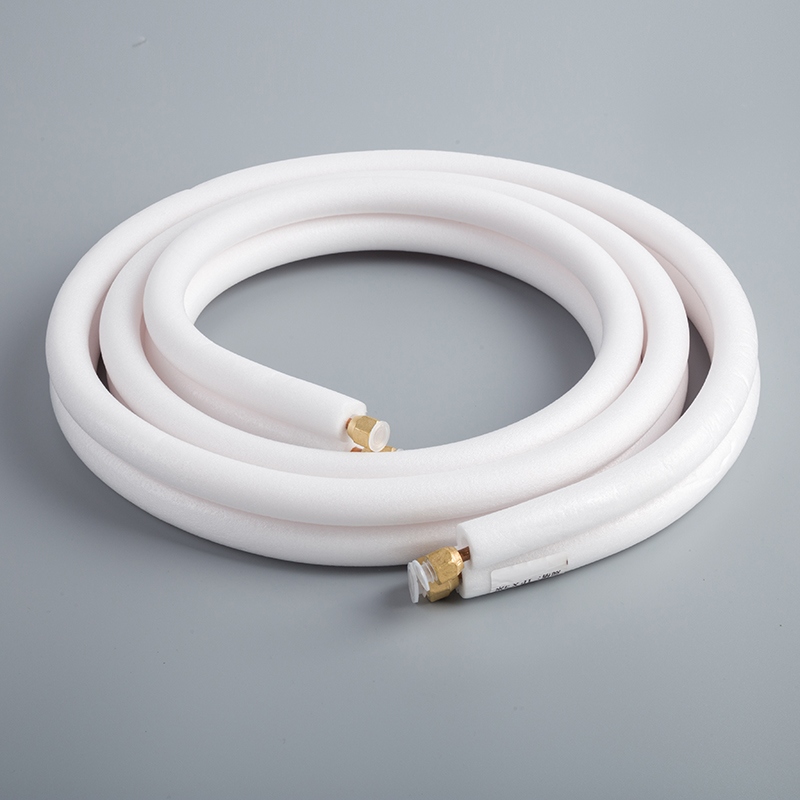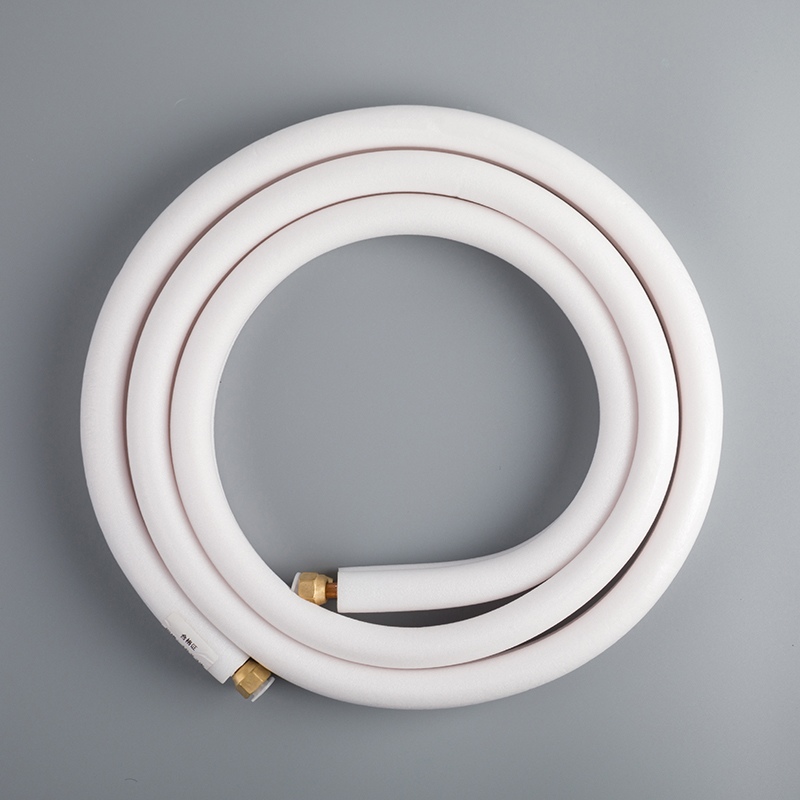Top Tips to Prevent Condensation on Copper Pipes

Write a 'Tips' blog post on 'Tips for preventing condensation on copper pipes'
When facing the issue of condensation on copper pipes, understanding its implications becomes crucial. Addressing this problem promptly can prevent potential damage and maintain the integrity of your plumbing system. This blog will delve into the causes of condensation, risks associated with it, and most importantly, provide top tips for preventing condensation on copper pipes.
Understanding Condensation on Copper Pipes

What is Condensation?
Definition and Explanation
Condensation on copper pipes occurs when cold water inside the pipes encounters warm and humid air. This interaction leads to moisture from the air condensing on the outer surface of the pipes, forming droplets. The process is similar to how dew forms on grass in the early morning.
Common Signs of Condensation
Visible Water Droplets: One of the most apparent signs of condensation is the presence of water droplets on the exterior of copper pipes.
Dampness Around Pipes: Areas surrounding the pipes may feel damp or moist to the touch.
Water Stains: Over time, you might notice water stains developing on walls or ceilings near where the condensation forms.
By understanding these common signs, individuals can promptly identify and address condensation issues before they escalate into more significant problems.
Risks Associated with Condensation on Copper Pipes
Potential Damage to Pipes
Corrosion and Rust
Condensation causing corrosion on copper pipes is a common issue. The moisture from the air reacts with the metal, leading to rust formation. This process weakens the pipes over time, making them susceptible to leaks and breakage.
Structural Weakness
The continuous presence of condensation can result in structural weakness in copper pipes. The combination of moisture and temperature changes can compromise the integrity of the pipes, increasing the risk of cracks or bursts.
Impact on Surrounding Areas
Mold and Mildew Growth
Condensation not only affects the pipes but also poses risks to surrounding areas. Excess moisture from condensation creates an ideal environment for mold and mildew growth. These fungi not only damage surfaces but also pose health risks to individuals exposed to them.
Damage to Walls and Floors
The impact of condensation extends beyond the pipes themselves. Walls and floors near areas prone to condensation can suffer damage over time. Water stains, peeling paint, and weakened structures are common consequences of prolonged exposure to condensation.
By understanding these risks associated with condensation on copper pipes, individuals can take proactive measures to prevent potential damage and maintain a healthy plumbing system.
Differentiating Between Condensation and Leaks
Identifying Condensation
Visual Indicators
Water droplets forming on the exterior of copper pipes are a clear sign of condensation.
Dampness felt around the pipes indicates the presence of condensation.
Observation of water stains developing on nearby surfaces can signify condensation issues.
Time of Occurrence
Condensation typically occurs during periods when warm, humid air comes into contact with colder pipe surfaces.
The formation of water droplets is more noticeable during temperature differentials, such as in the early morning or evening.
Identifying Leaks
Continuous Water Presence
The continuous presence of water around pipes suggests a potential leak rather than condensation.
Pools of water accumulating near pipe joints or connections may indicate a leak in the plumbing system.
Water Pressure Issues
Fluctuations in water pressure can be a sign of leaks rather than condensation.
Sudden drops in water pressure or irregular flow patterns could point towards leaks within the piping network.
Top Tips to Prevent Condensation on Copper Pipes
Insulating the Pipes
Types of Insulation Materials
Insulation plays a vital role in preventing condensation on copper pipes. Thermaxx Cold Insulation Jackets are designed to fit snugly around pipes, creating a barrier that prevents warm, humid air from coming into contact with the chilled pipe surface. These removable and reusable insulation blankets are built with hydrophobic aerogel insulation, ensuring effective protection against condensation. Additionally, MM Kembla Paircoil and PaircoilMAX offer insulated solutions tailored to prevent surface condensation based on varying temperature and relative humidity conditions.
Thermaxx Cold Insulation Jackets: Removable reusable insulation blankets
MM Kembla Paircoil and PaircoilMAX: Tailored insulation solutions for preventing condensation
How to Properly Insulate Pipes
Properly insulating copper pipes is essential for maintaining optimal temperatures and preventing condensation-related issues. When insulating pipes, ensure a snug fit to eliminate gaps where warm air can infiltrate. Use high-quality insulation materials like foam or nitrile rubber to provide efficient thermal resistance. Regularly inspect the insulation for any signs of wear or damage, as compromised insulation can lead to increased condensation risks.
Choose suitable insulation materials such as foam or nitrile rubber.
Ensure a snug fit during installation to prevent gaps.
Regularly inspect the insulation for wear and tear.
Controlling Humidity Levels
Using Dehumidifiers
Controlling indoor humidity levels is crucial in preventing condensation on copper pipes. Dehumidifiers are effective tools for reducing excess moisture in the air, thereby minimizing the potential for condensation formation. By maintaining optimal humidity levels within your home or building, you can significantly reduce the risk of condensation-related issues.
Dehumidifiers: Effective tools for reducing excess moisture
Improving Ventilation
Improving ventilation in areas prone to condensation can help mitigate moisture buildup and prevent potential damage to copper pipes. Proper airflow promotes evaporation of excess moisture, reducing the likelihood of condensation forming on pipe surfaces. Utilize exhaust fans in kitchens and bathrooms to enhance ventilation and create a more conducive environment for preventing condensation.
Enhance ventilation in areas prone to condensation.
Utilize exhaust fans in kitchens and bathrooms.
Regular Maintenance and Inspection
Checking for Early Signs of Condensation
Inspect the copper pipes regularly to detect any early signs of condensation formation, such as water droplets or dampness around the pipe surfaces.
Look for any discoloration or water stains near the pipes, as these could indicate ongoing condensation issues that need attention.
Monitor the temperature differentials between the pipe surface and the surrounding air to identify potential condensation-prone areas.
Professional Inspection Services
Consider seeking professional inspection services to assess the extent of condensation on your copper pipes accurately.
Engage with experienced plumbers who can conduct a thorough evaluation of your plumbing system to pinpoint condensation risks effectively.
Request detailed reports from professionals outlining preventive measures and maintenance strategies tailored to your specific condensation concerns.
Professionals stress the significance of proper maintenance and insulation to prevent condensation on copper pipes. Implementing Tips for preventing condensation on copper pipes can safeguard your plumbing system. Take action by insulating exposed pipes, controlling humidity levels, and conducting regular inspections. Seeking professional help when needed ensures long-lasting, leak-free repairs and prevents potential damage. Remember, a proactive approach is key to maintaining optimal pipe conditions.
See Also
Essential Maintenance Tips for Copper Pipe Coils
Key Benefits of Insulating Your Copper Pipes
Exploring the Best Insulation for Copper Pipes
Comprehensive Guide to Maximizing Copper Pipe Efficiency
Effective Strategies for Extending 1/4 3/8 Copper Pipe Coils


